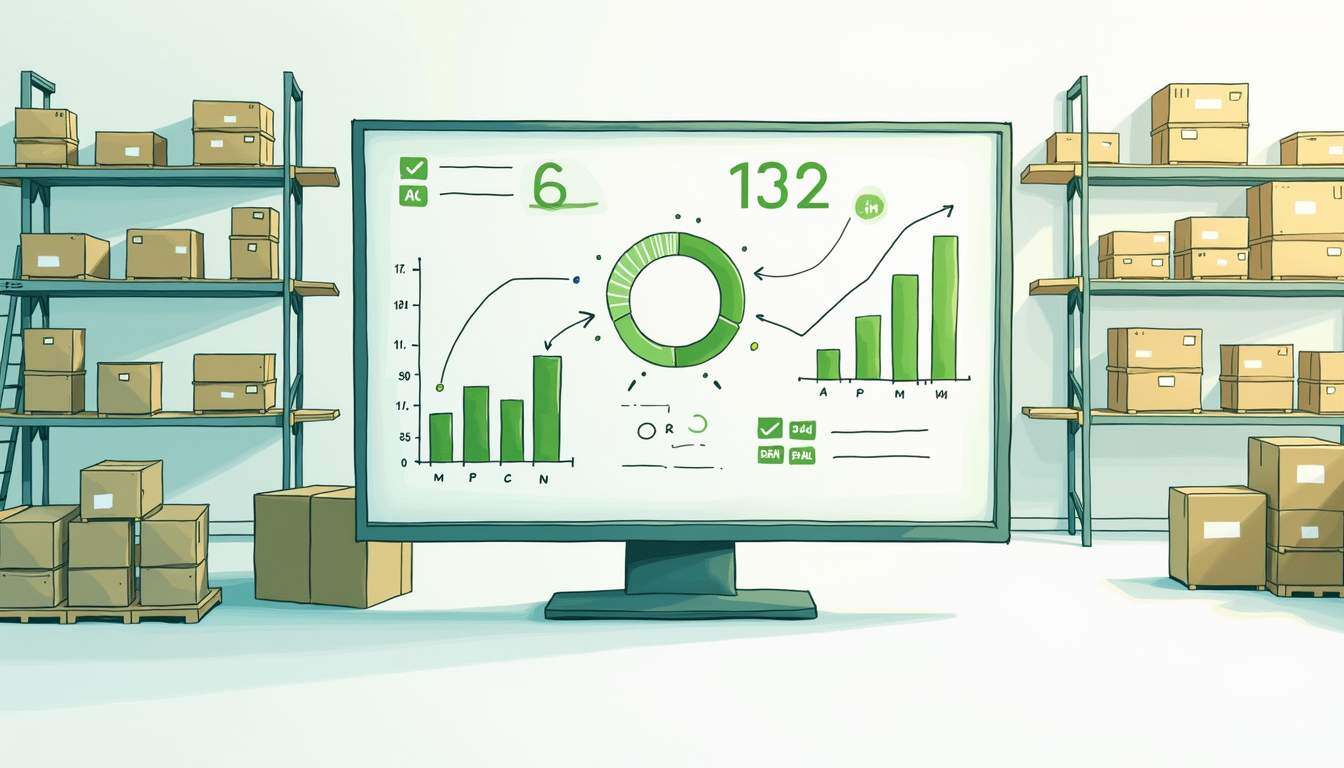Share this
Cushion Inventory and Why It’s So Important
by Christie McLeod on Jun. 15, 2021

Choosing the right partner can make or break your company’s logistics, customer service, and repeat purchases. Using a fulfillment center like Shipfusion frees you from navigating the fulfillment landscape with zero stress. Below are some insights on how Shipfusion can take your business to the next level.
It’s always wise to have a contingency plan. Keeping stock at optimum levels is both a balancing act and something of an art form.
Keep too little and you risk delays in the fulfillment process. Keep too much and before you know it you’ve cut into profit margins and increased holding costs.
A cushion inventory acts as a buffer to mitigate potential problems. The trick is to calculate the ‘right’ buffer inventory level or ‘above the cycle stock.’
Read on to find out how this will help bring greater certainty of supply from your fulfillment center.
What is Cushion Inventory in Your Fulfillment Center?
Cushion or buffer inventory relates to a surplus of stock that’s kept in a fulfillment warehouse or fulfillment center. It’s there to deal with things like emergencies, supply chain problems, transportation issues or an unexpected rise in demand.
It’s also known as contingency stock, safety stock or supply chain safety net. How much cushion inventory you keep at your fulfillment center will depend on these factors:
- The kinds of products you sell
- The average production lead times
- Your company’s inventory history
- The predictability of order trends
It may be you don’t know if you’ll be receiving a higher than usual volume of orders in the short term. A cushion or buffer in the quantity of stock you’re holding in your fulfillment warehouse is there for your peace of mind.
The Advantages of Keeping a Cushion Inventory
Better than expected sales are a good thing but running out of supplies is not great for business. One of the difficulties is that inventory forecasting is never 100 percent accurate.
Keeping cushion or buffer inventory is a good way to keep stockout costs low and reduce delays in shipping and order fulfillment.
To work out the amount of cushion stock to have available, you’ll need to put in place an inventory management system that tracks stock and demand. This will allow you to select reorder dates so that you know when it’s the right time to restock.
How to Calculate the Best Cushion Inventory Levels
It’s all about the math. There is no one-size-fits all way to work out how much cushion inventory to store. There are several methods you can use to make your calculation. You will need analytics and reporting tools to carry it out effectively.
Quick Cushion Stock Calculator
Once you have the right data available, you’re all set to work out your optimum cushion inventory levels in your fulfillment center. This is what you’ll need:
- Maximum number of units you expect to sell in a day
- Maximum lead times
- The average number of units sold in a day
- Average lead times
Once you’ve collected this data, use this simple formula:
Maximum daily units x Maximum lead time minus Average daily units x Average lead times
The Heizer and Render Buffer Inventory Method
These two educators came up with a cushion inventory method that comes into its own when there are significant inventory variations. These could be because of disparities related to a supplier or manufacturer.
The Heizer and Render cushion inventory method relies on the standard deviation of the lead time distribution and desired service factor. This paints a more accurate picture of how much cushion you need based on any previous supply chain holdups.
Multiply the desired service factor (Z) by the standard variation in lead time (𝜎LT) ie: the level and recurrence by which the average lead time is different from the actual lead time.
Here is the formula: Z x 𝜎LT
Bear in mind that the higher your service factor level, the more cushion inventory you’re going to need. This can greatly hike up carrying costs.
Greasley’s method
Andrew Greasley’s method of inventory calculation takes into consideration the standard deviation of lead time, desired service factor and also average demand.
Here is the formula:
𝜎LT x average demand x Z
The standard deviation in lead times relates to the volatility or variability in lead times, over a length of time. Average demand refers to the number of goods required to meet customer demand within a set period.
This method is often used when the demand and the lead time typically vary a lot. Having said that, it does not take into consideration the amount of stock that’s still in production and not yet ready for sale.
The Benefits of Historical Data
Whichever way you choose to work out cushion inventory, it’s always wise to have historical order and inventory data at your fingertips.
Inventory forecasting needs extensive planning. This helps to make sure a business is always ready to meet demand while being mindful to not order too much.
With demand forecasting tools, you can quickly integrate all supply chain data from multiple channels. This will give an overview of actual product demand and insight into sales forecasts.
Partner up with a Logistics Specialist
Dealing with logistics is time-consuming. Any decision can have a massive impact on a company’s capacity to offer reliable fulfillment and shipping to its customers.
Teaming up with a third-party logistics partner (3PL) like Shipfusion has a wealth of benefits. These include:
- Optimizing your supply chain
- The provision of expertise, technology and extra resources
- Freeing you up from dealing with logistical issues
A 3PL partner like Shipfusion can provide the technology to bring up historical order data. This will help you to work out your ideal reorder quantity and the amount of cushion inventory you need to stop any stockouts.
As a business grows, it’s worth thinking about ways to make the inventory management process easier. This could be by investing in technology and partnering with logistics experts.
Outsourcing Logistics for More Efficient Fulfillment
Managing the logistics of a fulfillment center or fulfillment warehouse takes time, money and energy. Inventories are often moving targets.
A tech-savvy 3PL like Shipfusion will give you all the tools you need to build a successful eCommerce operation.
You’ll always have expert inventory management and powerful real-time technology available. That means you can concentrate on growth without all the pressure. Shipfusion sets your business on autopilot and combines flexible, reliable fulfillment with powerful, real-time technology. Shipfusion has multiple fulfillment centers across the US and Canada– making it easy to manage your eCommerce business. For more information on how to set your business on autopilot, contact one of our fulfillment specialists today.
Share this
You May Also Like
These Related Articles

Your Guide on How to Create an Inventory Strategy

The ROI of an Inventory Management System for Warehouse Operations

Guide to Alternative Inventory Funding Options for Ecommerce
- April 2025 (18)
- March 2025 (26)
- February 2025 (26)
- January 2025 (37)
- December 2024 (16)
- November 2024 (23)
- October 2024 (22)
- September 2024 (27)
- August 2024 (9)
- July 2024 (8)
- June 2024 (5)
- May 2024 (8)
- April 2024 (8)
- March 2024 (6)
- February 2024 (6)
- January 2024 (5)
- December 2023 (3)
- November 2023 (3)
- October 2023 (5)
- September 2023 (4)
- August 2023 (2)
- July 2023 (1)
- June 2023 (4)
- March 2023 (2)
- October 2022 (1)
- September 2022 (5)
- August 2022 (4)
- July 2022 (7)
- June 2022 (4)
- May 2022 (4)
- April 2022 (6)
- March 2022 (2)
- February 2022 (1)
- January 2022 (3)
- December 2021 (2)
- November 2021 (4)
- October 2021 (2)
- September 2021 (5)
- August 2021 (4)
- July 2021 (4)
- June 2021 (3)
- May 2021 (2)
- April 2021 (3)
- March 2021 (3)
- February 2021 (3)
- January 2021 (2)
- December 2020 (4)
- November 2020 (2)
- October 2020 (4)
- September 2020 (2)
- July 2020 (5)
- June 2020 (4)
- May 2020 (2)
- April 2020 (2)
- March 2020 (4)
- February 2020 (1)
- December 2019 (1)
- May 2018 (1)
- March 2018 (2)
- February 2018 (3)
- January 2018 (3)
- November 2017 (3)
- July 2017 (4)
- March 2017 (3)
- February 2017 (5)
- January 2017 (3)
- December 2016 (4)
- November 2016 (6)
- October 2016 (6)
- October 2015 (1)
- September 2015 (1)
- June 2015 (3)
- May 2015 (3)
- August 2014 (1)
- July 2014 (1)
- March 2014 (1)
- February 2014 (1)